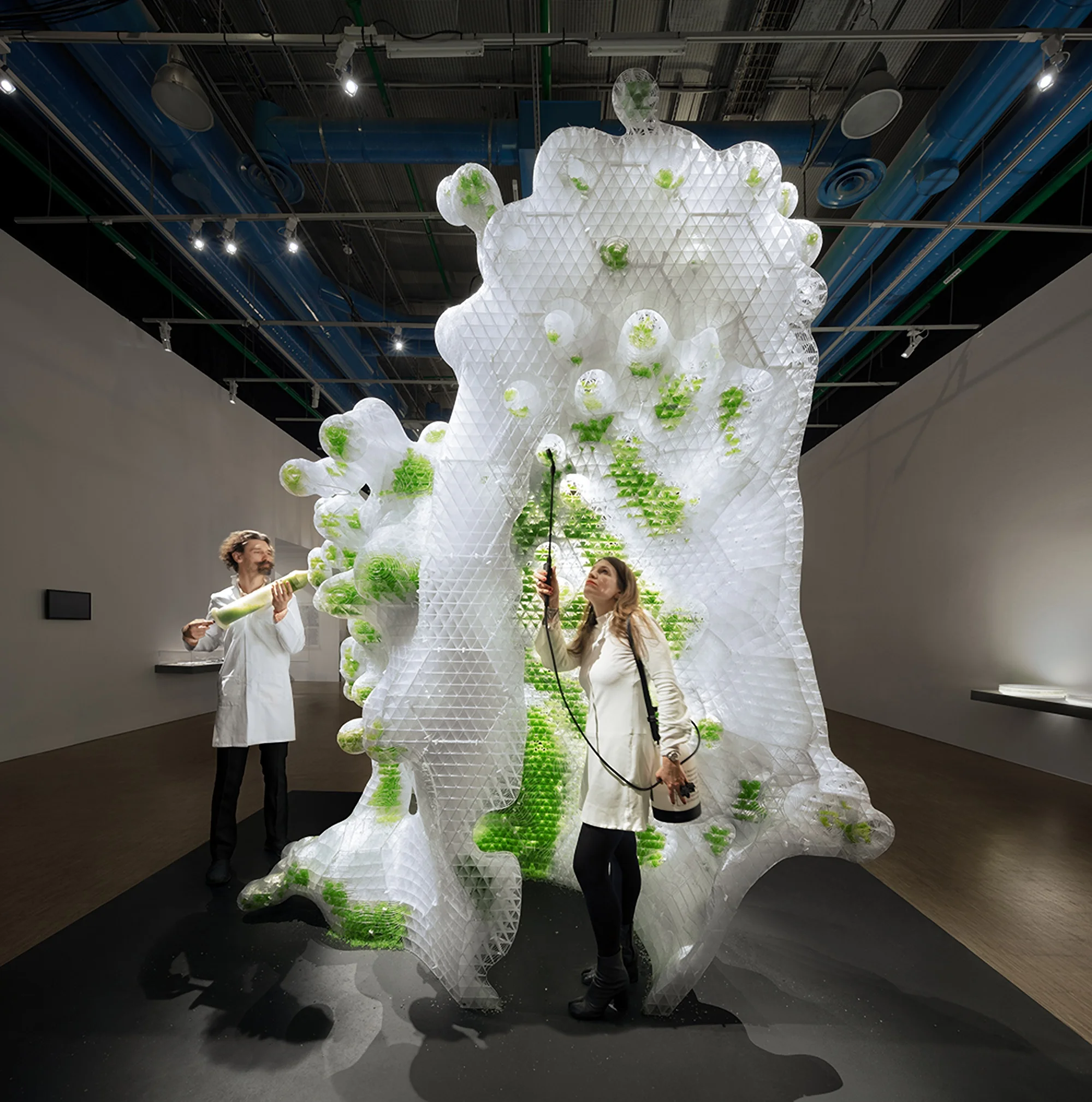HORTUS_XL | ASTAXANTHIN.G
About the Project
In H.O.R.T.U.S. XL Astaxanthin.g, a digital algorithm simulates the growth of a substratum inspired by coral morphology. This is physically deposited by 3D printing machines in layers of 400 microns, supported by triangular units of 46 mm and divided into hexagonal blocks of 18.5 cm. Photosynthetic Cyanobacteria are inoculated on a biogel medium into the individual triangular cells, or bio-pixel, forming the units of biological intelligence of the system. Their metabolisms, powered by photosynthesis, convert radiation into actual oxygen and biomass. The density value of each bio-pixel is digitally computed in order to optimally arrange the photosynthetic organisms along iso-surfaces of increased incoming radiation. Among the oldest organisms on Earth, cyanobacteria's unique biological intelligence is gathered as part of a new form of bio-digital architecture.
The visitors of the exhibition will move freely around and inside the installation, observing the bio-digital landscape made of protuberant 3D printed geometries and engaging in an exchange with the micro-algae. The micro-organisms will absorb the carbon dioxide produced by human breathing and transform it into oxygen in a process that also creates biomass, useful for the production of bioplastic material and energy.
3D Printed System Development and Production
The CREATE Group and WASP Hub Denmark from SDU have contributed to the development of the 3D printed system and the digital fabrication of the structure: “In this jointed research, biological and digital strategies are fused together to conceive a novel model of architecture, able to contribute positively to the urban environment”, explains Roberto Naboni, Assistant Professor at the University of Southern Denmark (SDU). The experimental structure is composed of 185 different construction components which are entirely produced by Delta WASP 3D Printers for a total of 1780 hours and 271 kgs in weight, in between the CREATE Lab/WASP Hub Denmark, and the Synthetic Landscape Lab at Innsbruck University.
The bio-reactor is printed in PETG thermoplastic and characterized by complex morphology and high level of details. Each component has very differentiated geometry, which has required an individualized study to optimize the printing process for precision and speed. The overall printed structure performs as a symbiotic substratum for the internal proliferation of micro-algae on a biogel suspension and therefore is characterized by an external porous shell which favours the air exchange with the biological compound, high transparency to gain the needed light to run photosynthetic processes, and high chemical resistance. The construction system is based on reversible connections among the components which allow the easy relocation of the prototype.
H.O.R.T.U.S. XL Astaxanthin.g was exhibited at the Centre Pompidou in Paris and at MAK – Museum of Applied Arts in Vienna.
PROJECT CREDITS
Design: ecoLogicStudio (Claudia Pasquero, Marco Poletto, Konstantinos Alexopoulos, Matteo Baldissarra, Michael Brewster
Research partner for biological as well as 3D Printed systems and production development: Synthetic Landscape Lab, IOUD, Innsbruck University (Prof. Claudia Pasquero, Maria Kuptsova, Terezia Greskova, Emiliano Rando, Jens Burkart, Niko Jabadari, Simon Posch); Photosynthetica consortium (www.photosynthetica.co.uk)
Research partner for 3D Printed systems and production development: CREATE Group / WASP Hub Denmark - University of Southern Denmark (SDU) (Asst. Prof. Dr. Roberto Naboni, Furio Magaraggia)
Engineering: YIP structural engineering, Manja Van De Vorp
Microalgal Medium Material Support: Ecoduna AG
3D printing Material: Extrudr








